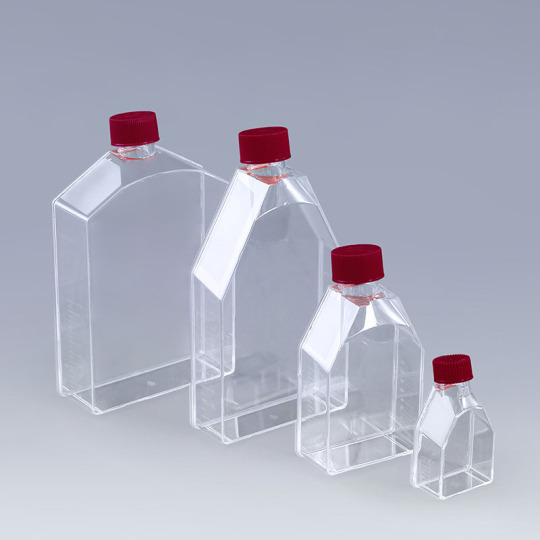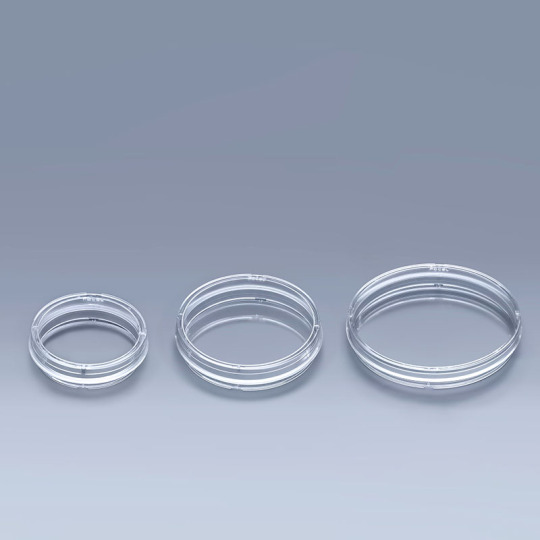#cellculturedishes
Text
Cell culture consumables commonly used in laboratories and their uses
Cell culture consumables are indispensable experimental tools in the cell culture process. Commonly used consumables include cell culture flasks, cell culture dishes, and cell culture plates. So what are their respective uses?
1. Cell culture dishes:
Cell culture dish is a laboratory vessel used for microorganism or cell culture. It consists of a flat disc-shaped bottom and a cover, usually made of glass or plastic. The materials of culture dishes are basically divided into two categories, mainly plastic and glass. Glass can be used for plant materials, microbial culture and adherent culture of animal cells. The plastic ones may be made of polyethylene, and are disposable or multiple-use. They are suitable for laboratory inoculation, streaking, and bacterial isolation operations, and can be used for the cultivation of plant materials.
Cell Culture Dishes
2. Cell culture plates:
Cell culture plate can be divided into flat bottoms and round bottoms (U-shaped and V-shaped) according to different bottom shapes; the number of culture holes is 6, 12, 24, 48, 96, 384, 1536 holes, etc.; according to different materials, there are Terasaki plates and ordinary cell culture plates. Generally, flat-bottomed plates are used, while round-bottomed culture plates are mainly used for isotope incorporation experiments, and a cell collector is required to collect cells for culture. The cell culture plate is mainly made of PS material, and the material is treated sufface, which facilitates cell attachment, growth and expansion.
Cell Culture Plates
3. Cell culture flasks:
According to the shape, culture bottles are divided into wide-body culture flasks, triangular culture flasks and torsion-neck culture flasks. Some cells and tissues can grow in suspension, but a considerable number of mammalian cells need to adhere to the surface. Culture bottles can meet the needs of both suspension and adherent growth of cells.
Cell Culture Flasks
The above are just a few common cell culture consumables. Cell factory systems, disposable bioreactors, etc. all belong to the field of cell culture consumables. With the rapid development of the biological research field, cell culture consumables will maintain a rapid development trend in the future.
0 notes
Text
The Difference Between Cell Culture Flasks and Cell Culture Dishes
Cell culture is a very important experimental technology, and has become an indispensable research method in the fields of biopharmaceuticals, life sciences, and clinical transplantation. Cell culture must rely on cell consumables to achieve the conditions required for cell growth. Cell culture flasks and cell culture dishes are two common types. So what is the difference between these two consumables?
Cell culture flasks are suitable for long-term culture, subculture, and as seed cells. The bottle mouth is small and the cells are not easy to be polluted. Cell culture dishes are suitable for use in various experiments and temporary culture. The difference between the two lies in the level of safety factor and the number of cultured cells.

Cell Culture Flasks
It is better to use cell culture dishes for experiments with cells as carriers or objects, because the amount used is relatively small, saving cells, and petri dishes are more convenient for control experiments, but the cell culture dishes have larger openings and are relatively easier to contaminate, so more care must be taken during operation.
Cell culture flasks are used for primary culture of tissue blocks or easily contaminated cells. After the grown cells are subcultured, it can be determined according to personal preference. The area of the cell culture flask is large, so it can be used when a large number of cells need to be expanded.

Cell Culture Dishes
Both cell culture flasks and cell culture dishes are containers used for microorganism or cell culture in the laboratory. The specific choice of consumables depends on the specific needs of the experiment, and the cell culture method should also be considered, whether it is suspension culture or adherent culture. Appropriate consumables are the basis for successful experiments.
0 notes